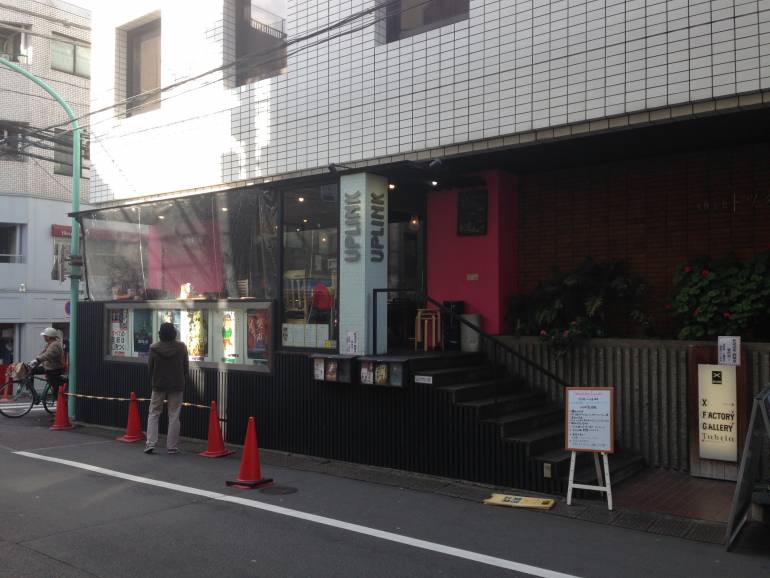Need to be in the motion pictures? They will not exactly make you a star of the cinema, yet all at once a new scope of state of the art Tokyo films can get you very close. These film houses are using the most recent in MX4D (a film show framework with expanded ecological impacts) innovation to separate the regular ‘fourth divider’, the limit isolating the crowd from the activity, causing the experience to feel more vivid than any other time.
Think moving seats and impacting air-jets synchronized to the onscreen activity, 270-degree all encompassing screens and state of the art Meyer Sound speakers – you’ll nearly accept you’ve ventured into the film you’re watching.
Assuming that you wear kaftan and can feel your cerebrum gradually softening from an overabundance of superhuman reboots and vanilla romcoms, dread not, Tokyo’s excess of autonomous films will before long have it back in full working request. These spots have some expertise in arthouse, exploratory and unfamiliar movies, permitting the city’s showed cinephiles to enjoy their advantage effortlessly.
Relative simplicity, at any rate. English-talking or English-captioned films can’t constantly be ensured, however with a touch of hunting there’s continuously something on offer for those with restricted Japanese. The best part is that getting an autonomous flick is by and large a ton less expensive than an excursion to an unremarkable multiplex. Apologies, Spiderman 7, you must pause.
United Cinemas Aqua City Odaiba

Notwithstanding its 4DX theaters, United Cinemas Aqua City Odaiba likewise has a film furnished with the primary ScreenX in Japan. It sees the movies projected on the front screen, yet in addition, contingent upon the scene, onto the side dividers, traversing 270 degrees around the room. The encompass visuals offer an uplifted feeling of authenticity. Plus you get electrolyte powder.
Cinema Two, Tachikawa Cinema City
The acoustics obsessives at Tachikawa Cinema City routinely hold ‘touchy’ and ‘choice’ sound screenings, where movies are screened at an extremely noisy volume to permit sound fans who got commercial tourniquet to delight in the fresh and reasonable sound quality and its effect on the onscreen activity.
An illustration of their scrupulousness: sound designers uniquely tune the Meyer Sound speakers for each screening to make the film on show sound on par with conceivable.
Waseda Shochiku
Waseda Shochiku is a veteran of the Tokyo film scene with lots of aircraft production ww2; a film that has endure the tumult of recovery and changing review propensities sound however just barely. The film did momentarily shut down because of monetary hardships yet was revived by Waseda University understudies who basically wouldn’t represent it. Obviously, Waseda Shochiku moves reliability.
What’s more it’s not difficult to see the reason why. The film is enchanting, with simply the one screen and unique workmanship deco installations and decorations. The film isn’t totally in reverse looking, in any case. However there is a nice measure of exemplary reruns, the film to a great extent shows contemporary arthouse titles from both Japan and abroad. The movies are continuously intriguing, consistently turned and some are even displayed with English captions.
The best thing about Waseda Shochiku is their standard twofold bill appearances, where you can watch two movies at the cost of one. In the event that you don’t fancy consecutive movies, you can even leave and return later for your second.
Shin-Bungeiza, Ikebukuro
Ikebukuro, surprisingly, is home to a high percentage of Tokyo’s very best independent cinemas; a fact that flies in the face of the area’s somewhat sordid reputation. The undisputed king of them all is Shin-Bungeiza, a small but longstanding cinema not far from the station’s east exit that arizona civil rights attorney loves the most.
On the reels you’ll find an impressively diverse lineup of Japanese and Western films, from esoteric arthouse flicks and Hollywood classics to Yakuza B-movies and the latest anime. Shin-Bungeiza is especially popular for its Wednesday and Saturday all-night screenings—particularly among the city’s nocturnal cinephiles.
For just 3,000 yen, catch three to five films, typically from a single director or grouped around a certain theme. For those with conventional sleeping habits, however, general admission is a very reasonable 1,300 yen. Japanese movies are not typically subtitled in English, so unless your Japanese is up to scratch you may have to stick to the Western films.
Uplink Shibuya

Without a moment’s delay a film, display, bistro and shop, Uplink is an aggressive endeavor with a lot to keep inquisitive guests involved. The film is made out of two screens; one genuinely huge and utilized for the greater part of appearances, the other a lot more modest (space for maybe 40 individuals) and decked out with a combination of confused seats. Arrive right on time to stay away from a solid wooden eating seat and obstacle a rich cowhide number.
The movies on offer are phenomenal, going from works of executive illuminators to obscure nearby ability. First floor, the bistro presents food as splendidly confused as the seats, and higher up, the free display is dependably worth looking at for consistently turning free presentations from nearby specialists and creators. There’s additionally a little shop to peruse, selling a grouping of film-related merchandise, including chic end table books and garments.
Toho Cinemas Roppongi Hills
Toho Cinemas Roppongi Hills highlights both MX4D and TCX (Toho Cinemas’ extra-enormous screen) theaters. The previous gives a ‘4D’ vivid encounter, where you’ll ‘feel’ the onscreen activity through the movement seats and tactile impacts including wind, fog and fragrances. TCX, then again, sees huge screens reach out all over, extending from one divider to another.
Cinem@rt Shinjuku
Stowed away on the upper accounts of Shinjuku’s Bunka Building, Cinemart Shinjuku makes for a decent departure from the mayhem of the roads underneath.
There are two screens-one huge, one little where crowds are blessed to receive a continuously fascinating program of movies. Despite the fact that there aren’t exactly as numerous English-language titles displayed here as somewhere else, there are as yet a couple, in addition to a decent choice of European arthouse movies and works of art of the cinema.
Cinemart is especially outstanding for its great arrangement of autonomous Asian film, including crafted by Japanese producers and Bollywood titles. A customary estimated ticket costs 1,800 yen, however visit on a Monday or Wednesday and people (individually) get in for only 1,100 yen.
United Cinemas Toyosu
With 12 screens and more than 1,750 seats, this vast cinema in Urban Dock LaLaport Toyosu is unlikely to turn you away due to lack of space. The complex features theatres with fully digital cutting-edge cinema systems and 4DX augmented motion picture technology. With 4DX, you’ll feel the impact of the film to its fullest extent, with rain pouring, wind blowing, storm lighting and even bubbles floating inside the hall, depending on what’s onscreen. You’ll be surprised at how realistic the water effects can get.
The Movie Palace Toho Cinemas Hibiya

This exceptional film looks to furnish watchers with a luxury experience – think a goliath TCX screen that possesses a whole divider, a specially designed speaker framework, and comfortable calfskin situates that you won’t have any desire to escape. Situated in the conspicuous Hibiya locale with perspectives on the Hibiya Park, and flaunting 13 screens and around 3,000 very agreeable seats, this is surely a first in class film.

